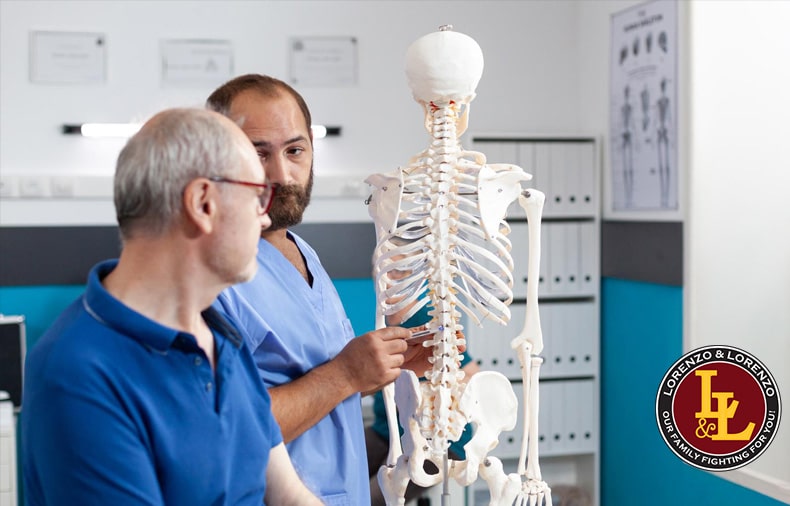How to get help if you’ve been paralyzed in an accident
A catastrophic injury is life-altering for the victim and those they love. An injury that involves paralysis is often extremely difficult for the patient to accept. Learning to adapt to a future life of restricted or lost mobility can be psychologically and emotionally devastating.
After a car crash, truck accident, slip-and-fall, or medical malpractice, you or someone you love may have many questions about the long-term impacts of health, medical care, and work. If you’ve been paralyzed due to negligence, time is of the essence, so don’t wait too long to contact an attorney.
After a spinal cord injury, partial or complete immobility may result. Mobility depends on the spinal area affected and the injury’s severity. No 2 spinal injuries are exactly alike.
Only a physician is qualified to discuss the potential limitations and lifelong changes catastrophic injuries may have on your life. For instance, you may need around-the-clock care, or there may be therapies and procedures that could help you adapt to your injuries. Even with accommodations, medical procedures, and physical therapy, however, life after a catastrophic injury will probably never be the same.
Spinal cord injury and types of paralysis
Spinal cord injuries can either be incomplete, in which the person retains some feeling below their injury, or complete, in which the spinal cord is severed and the person no longer experiences any sensations below the injury.
Types of incomplete spinal injuries
- Anterior cord syndrome affects the front two-thirds of the spine. This injury usually involves loss of sensations beneath the injury level.
- Central cord syndrome affects the center of the spine. This injury may include loss of function in the limbs (arms and/or legs).
- Posterior cord syndrome affects the back of the spine. This injury often results in difficulties with coordination.
- Brown-Séquard syndrome results from a lesion on the spine that affects the entire area below the injury. This injury usually only impairs mobility on one side of the body, affecting the side where the spinal cord injury occurred.
Physical therapy may help some patients recover partial mobility and greater independence. However, each patient and their injury is unique.
Types of paralysis after a catastrophic injury
- Monoplegia affects only 1 limb.
- Hemiplegia affects both the arm and leg on one side of the body.
- Paraplegia affects both legs. Occasionally, other parts of the trunk or pelvic region are also impacted.
- Quadriplegia affects both sets of limbs. Occasionally, muscles of the chest and abdomen may also be impacted.
- Spasticity affects the muscles, leaving the patient with feelings of stiffness or tightness.
- Dysphagia affects the throat muscles and can make swallowing difficult.
- Paraplegia affects the legs and lower half of the body, often requiring the patient to use a wheelchair.
- Quadriplegia affects all 4 limbs and can also affect organs such as the lungs, often requiring the patient to use a ventilator for breathing.
Common causes of traumatic paralysis
In the personal injury world, the most common causes of paralysis include work accidents, car accidents, sports injuries, trampoline injuries, horseback riding, slip-and-fall accidents, defective products and medical mistakes.
Spinal cord injuries and paralysis
Medical science lacks answers for most patients with spinal cord injuries. Actor Christopher Reeve became a lifelong advocate for others with spinal cord injuries after he became quadraplegic following a catastrophic horseback-riding injury in 1995.
Depending on the type and severity of your spinal cord injury, you may face many lifelong “new normal” needs, including the need for round-the-clock patient care, specialized medical care, and/or devices and procedures. A spinal cord injury may leave you with many questions about how to accept what’s happened and how to pay for all of the costs associated with your catastrophic injury.
Traumatic brain injuries (TBI) and paralysis
A traumatic brain injury doesn’t always result in paralysis, but it’s common for these 2 injury types of injuries to present in tandem. Physical therapy is important for those suffering from a brain injury, but TBI patients often need mental health care as well to address emotional problems, cognitive challenges, and memory loss.
How to calculate damages in a catastrophic injury with paralysis
If you or someone you love suffers a catastrophic injury that results in paralysis, your medical costs can be extraordinary. These costs may continue for the rest of your life. If paralyzed, you might not be able to work, which will greatly impact your ability to provide for yourself and your family. In such cases, you may legally seek compensatory damages for both economic and non-economic losses after a catastrophic accident leaves you paralyzed.
You may seek various damages from the negligent party, such as hospitalization costs, treatments, diagnostic testing, surgery, medical equipment (e.g., a wheelchair or walker), modifications to your home (e.g. wheelchair access ramp), rehabilitation, nursing aides, and physical therapy. You may also seek financial damages for emotional pain and distress and your future lost wages.
If you have suffered a life-altering catastrophic injury because of another party’s wrongdoing, an experienced catastrophic injury lawyer can work to secure the compensation needed for the years ahead.
At Lorenzo & Lorenzo, our Tampa catastrophic injury lawyers can evaluate how paralysis has affected your life. This includes an evaluation of the patient’s condition and their medical prognosis.
Factors to consider when calculating damages in a catastrophic injury case
- Is the paralysis temporary or permanent?
- How does the patient’s injury affect their ability to earn money from employment?
- How has the injury affected the patient’s quality of life?
- How has the injury affected the victim’s social and family life?
- What housing modifications are needed?
- What nursing care is needed?







